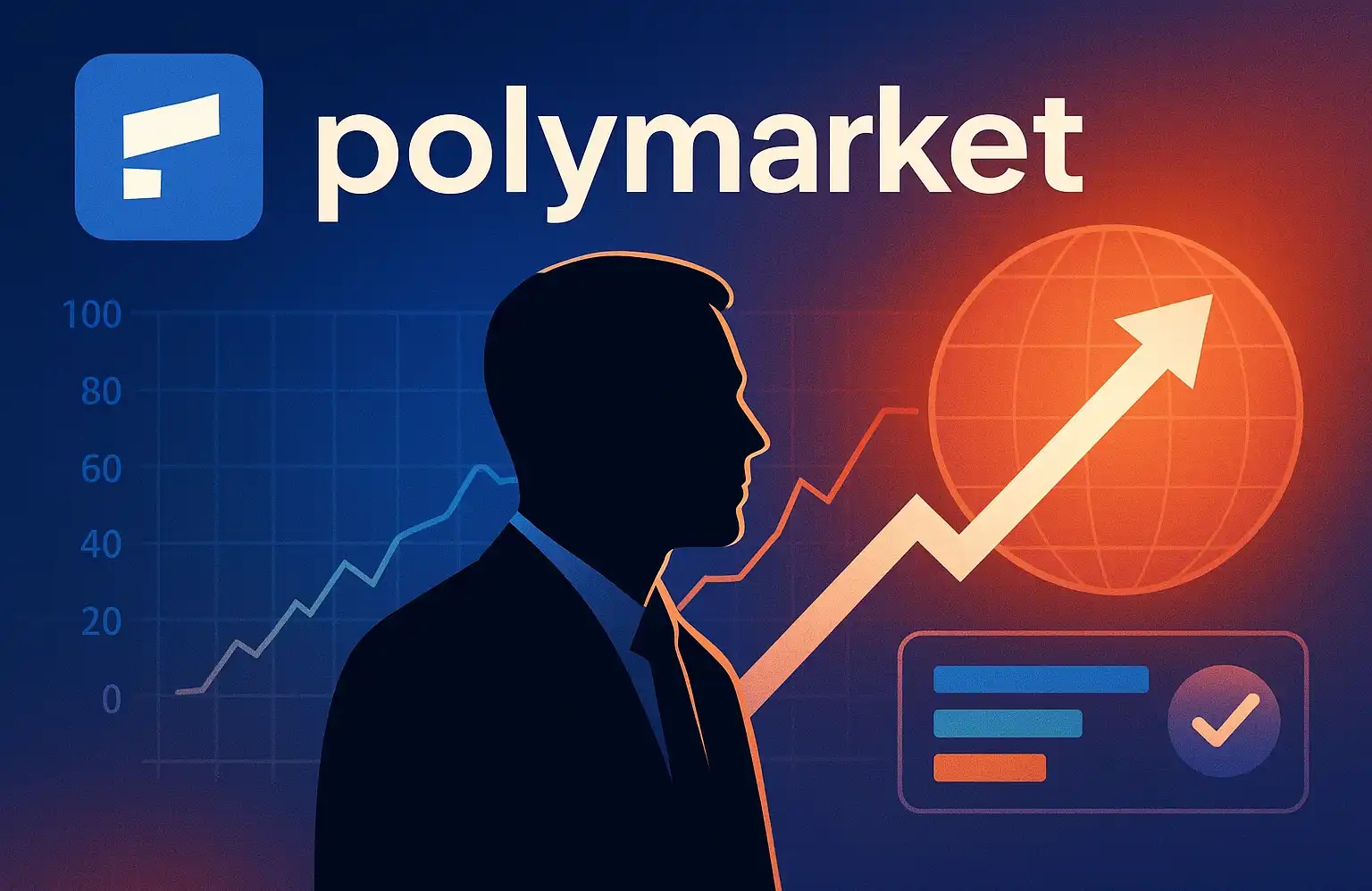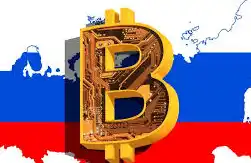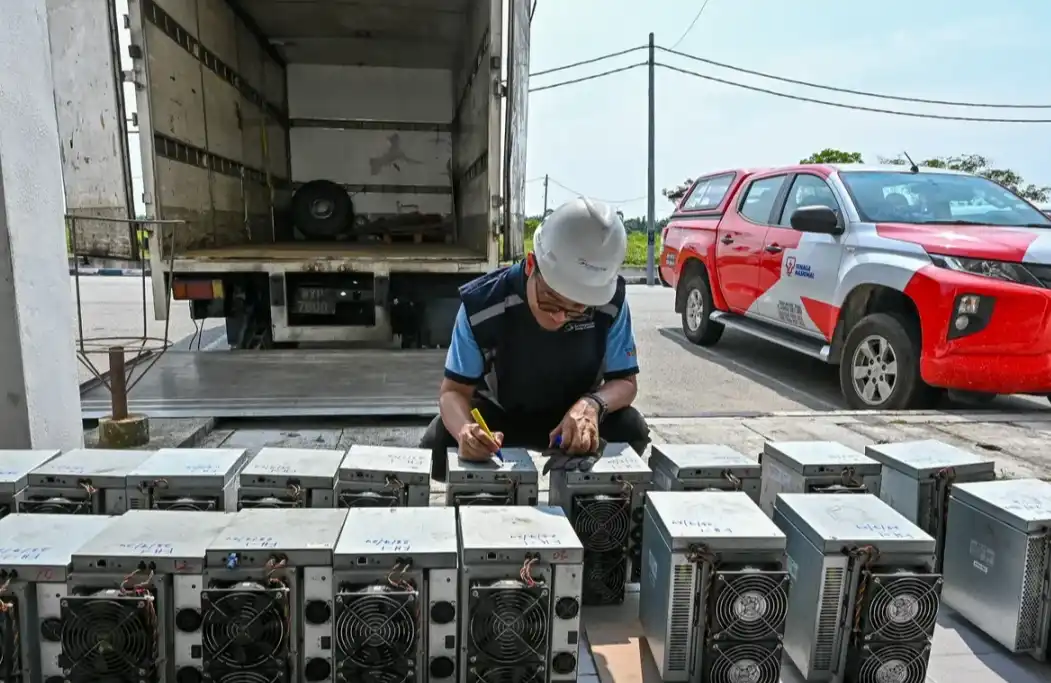After 1194 Days of Collapse, $40 Billion USD Stablecoin Pioneer Pleads Guilty

On August 12, 2025, inside a federal courtroom in Manhattan, wearing a yellow jumpsuit, Do Kwon stood up slowly.
Years of fugitive life and prison had significantly slimmed down his once-round cheeks, and his hairstyle had turned into the standard-issue inmate buzz. The eyes that used to sparkle in front of the camera now only showed fatigue.
This 33-year-old South Korean man, once the darling of the crypto world, was now the central figure in the largest financial fraud case in history.
In a courtroom sketch, Do Kwon had his head down, hands clenched tightly. He confessed, saying, "In 2021, I made false and misleading statements about the reasons behind the TerraUSD rebase. What I did was wrong, and I want to apologize for my actions."
Now, he faced years of imprisonment and massive fines, but for the hundreds of thousands of investors who lost $40 billion because of him, that was far from enough.
Time is the harshest judge, not only altering Do Kwon's appearance but also utterly destroying everything he once had.
Prosecutor Damian Williams stated outside the courtroom that this confession was a "significant milestone in cryptocurrency fraud enforcement." However, the word "milestone" sounds too cold, unable to mend those broken families, comfort the elderly who lost everything, or save the young people who chose to end their lives.
From an elite school in Seoul to Stanford, from skyscrapers in Singapore to a run-down prison in Montenegro, Do Kwon's life trajectory resembled a parabola, soaring rapidly, plummeting suddenly, and ending in complete ruin.
The Birth of a Genius
From Seoul to Silicon Valley
On September 6, 1991, Do Hyeong Kwon cried for the first time in a hospital in Seoul. No one could have predicted that this baby would, 30 years later, become one of the most controversial figures in global financial history.
He was born into a typical middle-class Korean family, with an engineer father and a teacher mother. This combination in Korean society symbolized reverence for knowledge and a thirst for success. South Korea is a country deeply troubled by educational anxiety, where children are thrust into competition from kindergarten. From a young age, Do Kwon displayed intellect beyond his peers, particularly excelling in mathematics, as if numbers would automatically arrange themselves into the most elegant solutions before him.
He attended Daewon Foreign Language High School in Seoul, one of the most prestigious schools in South Korea. This is where the brightest students in the country gather, spending the most crucial three years of their lives in this ivory tower. In the memories of his classmates, Do Kwon was always the first to finish homework and the one who loved challenging the teacher's views. His intelligence was very obvious, but even more obvious was his confidence. This kind of confidence might have been cute in the school campus during adolescence, but it also planted the seeds of future tragedies.

At that age, he already thought of himself as special, believing he was destined for great things. The high school Do Kwon was like a star gathering energy, waiting to burst into a dazzling light on a bigger stage. And that stage was Stanford across the ocean.
In 2010, 19-year-old Do Kwon boarded a flight to the United States. For a Korean youth, being able to enter Stanford University meant that life would be completely transformed. Stanford University is located in the heart of Silicon Valley, the birthplace of numerous tech legends.
The computer courses were not difficult for Do Kwon; what truly fascinated him was the entrepreneurial atmosphere pervading the campus. Here, every student dreamed of becoming the next Jobs or Zuckerberg, and every idea could turn into the next world-changing product. Silicon Valley has a unique magic that makes people believe technology can solve all problems and makes young people believe they can disrupt the world. Do Kwon was deeply influenced by this culture.
At that time, Bitcoin had just been born. The sharp-minded Do Kwon began to delve into blockchain technology, reading Satoshi Nakamoto's whitepaper and participating in related project developments. While his classmates were still anxious about finding a job, Do Kwon was already contemplating how to use technology to redefine money itself. In his view, the traditional financial system was outdated and inefficient, while blockchain technology represented the future.
The time at Stanford shaped Do Kwon's worldview. Here, he learned to think about problems in the language of technology, to see the world through the eyes of an entrepreneur. More importantly, he established a belief here: he was here to change the world.
In 2015, Do Kwon graduated from Stanford University. He was no longer the green youth from Seoul. He had become a confident young man, a dreamer who believed he could create miracles. His resume stated a Bachelor of Science in Computer Science from Stanford University, and his heart burned with the ambition to change the world.
Entrepreneurial Journey
Back in South Korea, Do Kwon faced a decision: whether to follow the path of most of his peers and join a large corporation like Samsung for a stable and respectable life, or embark on the risky journey of entrepreneurship. For a young man who had been immersed in the entrepreneurial culture at Stanford, the answer was clear.
In 2016, at the age of 25, Do Kwon founded Anyfi, marking his first venture into entrepreneurship. He aimed to utilize blockchain technology to enable users to share their WiFi networks and receive token rewards. In his view, traditional telecom operators were monopolists, and Anyfi could disrupt this monopoly through technology, allowing ordinary people to benefit from the network infrastructure.
Project 
The project garnered some attention and early-stage investment. Do Kwon began appearing frequently at tech events in South Korea, introducing his project and vision. His passionate speeches and exciting vision made him stand out. Under those spotlights, Do Kwon basked in the glow of being a startup star. However, reality soon hit him hard. The Anyfi project faced numerous challenges, and the infrastructure at the time was far from mature enough to support such a complex application. The gap between technological idealism and business reality was much larger than Do Kwon had imagined.
By the end of 2017, Anyfi had to admit defeat. For any entrepreneur, this would be an incredibly painful experience. Failure is bitter; it leads to self-doubt and reflection on one's decisions. But Do Kwon did not see it that way. He believed that Anyfi's failure was due to bad timing, as the market was not yet ready to accept such an advanced concept, and investors did not have enough foresight to support such a project.
This thought process is known as "self-serving bias" in psychology, where people tend to attribute success to internal factors (such as their abilities) and failure to external factors (such as bad luck).
For Do Kwon, the "self-serving bias" not only did not teach him a lesson from failure but also bolstered his confidence. He began shifting his focus to the emerging field of decentralized finance, particularly stablecoins. In his eyes, this was an opportunity to "redefine money itself," an opportunity to leave a legacy.
In January 2018, a new company emerged in Singapore—Terraform Labs.
The co-founders of this company were Do Kwon and Daniel Shin, two young graduates from top universities who were passionate about blockchain technology and believed they could change the world.

Choosing Singapore as its headquarters was a savvy decision. This city-state is not only the financial center of Asia, with a robust financial infrastructure and an internationally diverse talent pool, but more importantly, it has adopted a relatively open regulatory stance towards blockchain technology. Singapore encourages innovation, streamlines regulations, providing an ideal environment for startups like Terraform Labs.
Their core idea sounds simple: to create an algorithmic stablecoin system that combines the decentralized nature of Bitcoin with the stability of the US dollar. This system consists of two tokens: TerraUSD (UST) is the stablecoin designed to maintain a 1:1 peg with the US dollar; Luna is the governance token used to maintain the system's stability.
The relationship between the two is like a seesaw: when the UST price is above $1, the system mints more UST and burns Luna, increasing the UST supply to lower its price; when the UST price is below $1, the system burns UST and mints Luna, reducing the UST supply to raise its price.

This mechanism does not rely on bank deposits or government bonds as reserves; it relies entirely on the market and algorithms to maintain stability.
Do Kwon likened this system to a "gravitational force in the digital realm," calling it a revolution in the history of money. In his view, traditional stablecoins are like balloons tied to a string, while UST is like a planet with its gravity, naturally maintaining a stable orbit.
Do Kwon demonstrated outstanding persuasive skills during the fundraising process. He could explain complex technical concepts in clear and concise language, paint a grand and enticing vision. More importantly, he could make investors believe that he was the one who could achieve this vision. In August 2018, Terraform Labs completed a $32 million seed round, with investors including Binance Labs, Polychain Capital, Coinbase Ventures, and other reputable institutions. These investments not only provided financial support but, more importantly, gave the project authoritative endorsements.
In April 2019, the Terra blockchain was officially launched. This day held special significance for Do Kwon, marking his transformation from a failed entrepreneur to a promising leader poised to change the world.
At the same time, Terraform Labs started building an ecosystem around Terra. They launched the Terra Station wallet, allowing users to easily store and transfer Terra tokens. They partnered with a South Korean e-commerce platform, enabling users to shop using Terra tokens. They also began developing various decentralized applications to increase the demand for UST.
By the end of 2020, the Terra ecosystem had started to take shape. The market capitalization of UST reached hundreds of millions of dollars, and the price of Luna was steadily rising. More importantly, an increasing number of users began utilizing Terra's various services. Within the cryptocurrency community, Do Kwon was hailed as a pioneer of algorithmic stablecoins, and the Terra project was seen as one of the most promising projects in the DeFi space.
In such an environment, Do Kwon and his Terra empire continued to expand rapidly, moving towards greater success and deeper challenges.
Rome Wasn't Built in a Day
All That Glitters Is Not Gold
2021 was a turning point in Do Kwon's destiny.
During this year, he launched the Anchor Protocol, a lending protocol that promised a 20% annual yield for UST deposits. In the traditional financial world, such a yield is unimaginable; even the most aggressive hedge funds would struggle to sustain such high returns.

In Do Kwon's vision, the Anchor Protocol was the core engine of the Terra ecosystem. The high yield would attract significant capital, increase the demand for UST, drive up the price of Luna, and create a positive feedback loop.
However, this logic had a fatal flaw.
A 20% yield requires real economic activity to support it. To maintain this commitment, the Anchor Protocol needed approximately $6 million in subsidies every day. These subsidies primarily came from the Luna Foundation Guard (LFG), a foundation controlled by Terraform Labs.
In other words, the high yield of the Anchor Protocol was fundamentally a Ponzi scheme, using new investors' money to pay the returns of old investors. But Do Kwon never described it this way. In his speeches, the Anchor Protocol was the "future of decentralized finance" and the "terminator of the traditional banking industry."
At the beginning of 2022, Anchor Protocol's TVL surpassed $14 billion, making it one of the largest DeFi protocols at the time. Global investors flocked in, pouring their funds into it. The enthusiasm and trust of these investors delighted Do Kwon. He began to believe that he had truly created a miracle, that he had truly found the Holy Grail of the financial world.
At the same time, Do Kwon also launched the Mirror Protocol, a synthetic asset platform. In public promotion, this platform was described as "completely decentralized," with no individual or entity able to unilaterally control the protocol. However, reality was different. According to a later SEC investigation, Do Kwon was actually secretly maintaining control over the Mirror Protocol. He could unilaterally modify protocol parameters, decide which synthetic assets to add or remove, and even suspend the entire protocol.
A more serious fraud was Chai. Starting in 2019, Do Kwon claimed on various occasions that Chai used the Terra blockchain to process transactions, and that the transaction volume reached "billions of dollars." This claim was included in the Pitch Deck, used in media interviews, and presented as a key demonstration of Terra's practical use cases. Investors were truly persuaded by this data, especially since most blockchain projects were just concepts, while Terra seemed to already have a real-world application.
According to the SEC investigation, this was also false.
The transactions on the Chai platform were actually processed through the traditional financial network, not related to the Terra blockchain. Do Kwon and the executives at Terraform Labs were fully aware of this fact, yet continued to make misleading statements to investors. This was deliberate fraud, but in Do Kwon's view, as long as it could attract more investment and drive up the token price, some "details" could be overlooked.
Pride and Prejudice
Success made Do Kwon extremely arrogant.
In July 2021, when British economist Frances Coppola criticized the design flaws of algorithmic stablecoins on Twitter, Do Kwon responded, "I do not argue with poor people, sorry I don't have any spare change on me to give to her right now."

This statement was an insult to a scholar and a declaration of war on all critics. In his view, wealth equated to correctness, and those who criticized him were not doing so based on reason but because they were "poor." This remark caused a stir on social media. Supporters cheered for Do Kwon, seeing it as a strong rebuttal to traditional scholars. However, critics believed this exposed his true nature – that of a nouveau riche whose success had gone to his head.
There are many similar controversial statements. When someone questions Terra's sustainability, Do Kwon would say "They're all now poor." When someone is concerned about the risk of algorithmic stablecoins, he would mockingly say "Have fun staying poor."
Driven by this mentality, Do Kwon became more and more isolated. Few around him dared to voice different opinions, and even if someone raised doubts, he would rebut them with his wealth and success. This environment further reinforced his arrogance and alienated him from reality.
On April 17, 2022, Do Kwon announced the birth of his daughter on Twitter, writing, "Baby Luna, my dearest creation, named after my greatest invention."

This statement sparked controversy once again. Supporters believed it demonstrated his confidence in the project, but critics saw it as extremely narcissistic. A father naming his daughter after his own business project is highly unusual. What's even more unusual is his description of the project as "my greatest invention."
To Do Kwon, Terra is not just a business project but a reflection of his personal genius, a legacy he leaves to the world.
In April 2022, the Terra ecosystem reached unprecedented heights. UST's market cap exceeded $18 billion, Luna's market cap surpassed $40 billion, and the total value of the entire ecosystem neared $60 billion.
Do Kwon became a superstar in the crypto world. Major media outlets raced to report his story, various conferences invited him to give keynote speeches, and investors from all walks of life hoped to collaborate with him. On these occasions, Do Kwon always wore meticulously tailored suits, expensive watches, and a confident smile on his face.
Beneath the surface prosperity, risks continued to accumulate.
Some keen observers have begun to notice the issues. Anonymous researcher FatMan posted a series of analyses on Twitter, pointing out the unsustainability of Anchor Protocol. Economist Nouriel Roubini warned of fundamental flaws in algorithmic stablecoins. Even some opinion leaders in the cryptocurrency community have started to question Terra's long-term prospects.
Do Kwon dismissed these criticisms. To him, these were all just jealous losers. This blind self-assurance would soon exact a painful price.
In May 2022, amidst the sunny spring weather in Singapore, Terra's office was bustling. Employees were preparing for an upcoming product launch, and investors were pouring in money. Little did anyone know, an unprecedented financial tsunami was about to hit.

Do Kwon sat back on the office couch, envisioning himself as the hero who would change the world, a figure to be remembered by history.
History would indeed remember him, but not as a hero.
For the full article, please visit the 【动察Beating】 official account on WeChat
Welcome to join the official BlockBeats community:
Telegram Subscription Group: https://t.me/theblockbeats
Telegram Discussion Group: https://t.me/BlockBeats_App
Official Twitter Account: https://twitter.com/BlockBeatsAsia










